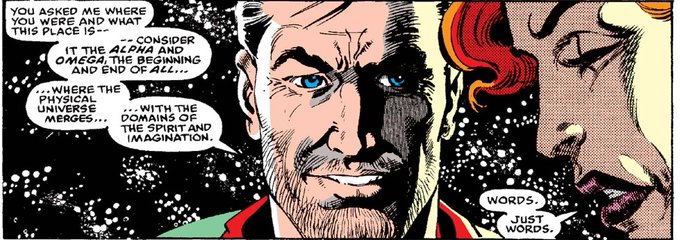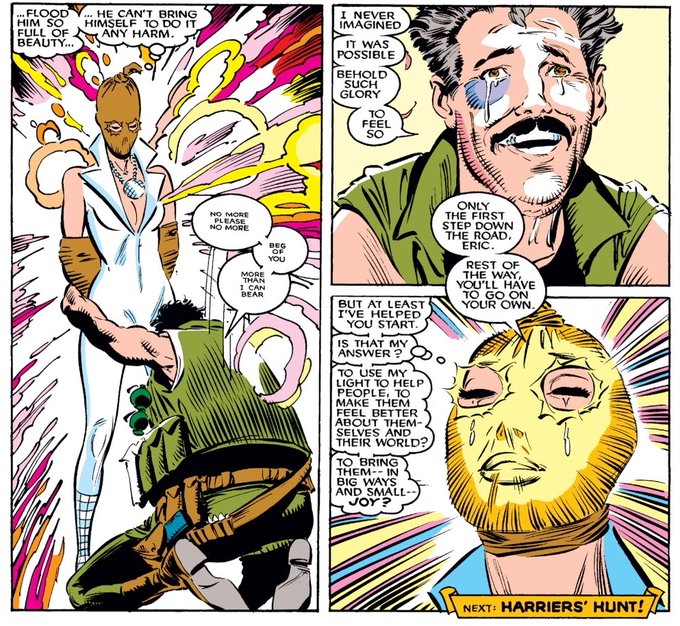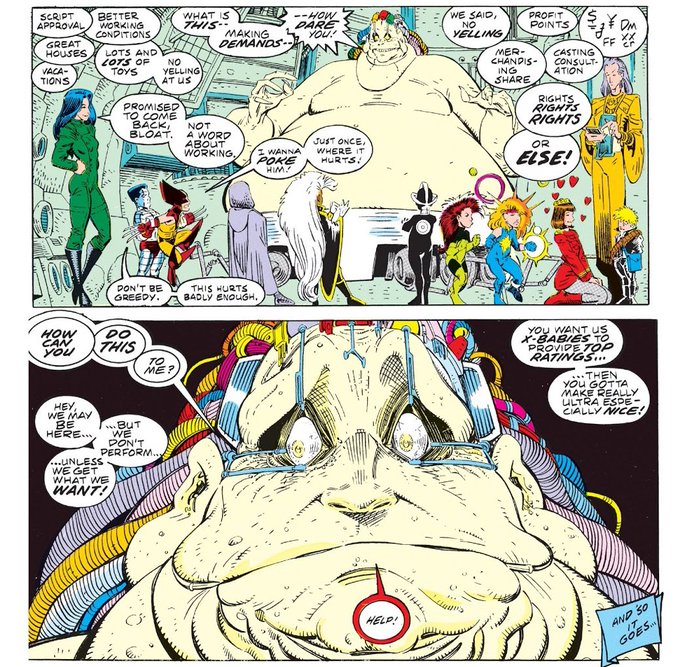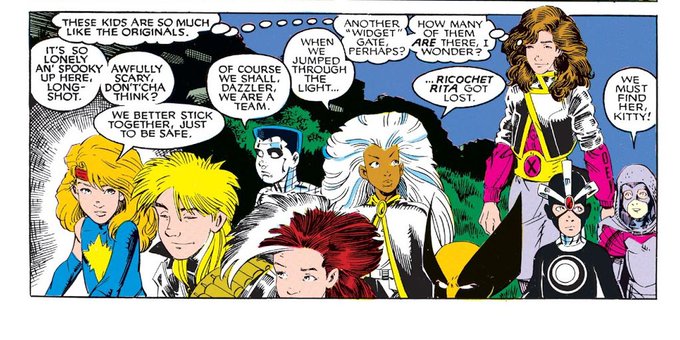claremontのTwitterイラスト検索結果。 937 件中 24ページ目
#XSpoilers Al Ewing referring to Ta-Nehisi Coates and Claremont, Hodari Yao is back! The Goddess of Storms. https://t.co/znY3LTApPv
...I purely enjoyed this series and all of what it had to say.
Nocenti is often the unsung hero of Claremont's Run–her time as line editor and Claremont's confidant underplayed in favor of putting attention toward Chris's work–but the Longshot series really highlights her...
We’ve talked before about Claremont’s tendency to fall into the “Magic Native American Trope” and Dani does indeed have some problematic stereotypes woven into her portrayal, especially in her first appearance. 2/9
...of Claremont's Run (and an argument for why so few of them have stuck since his exit from the franchise) is the dimensionality afforded his villains.
"Good" or "evil" are rarely as straightforward as they seem, and it was this perspective that Claremont infused into nearly...
All in all, we have a clear theme emerge wherein Claremont uses power creep to explore the social and cultural consequences of feminine empowerment, connecting his narrative, symbolically, to important anxieties manifesting in the culture as a result of 2nd wave feminism. 12/12
Similarly, Dazzler experiences a bit of power-creep during her last appearance under Claremont when she finds new avenues for her light-powers to impact people. So basically we could argue that the theme is consistent (though the degrees are variable) in every X-Woman. 10/12
“Warlord” callbacks tend to inspire romance, as in this scene from Claremont and Davis’s Uncanny X-Men #450 (2004), in which Kurt and Rachel get a bit *ahem* carried away in the Danger Room. Regardless of your mileage on Kurt/Rachel… Davis does his thing. 2/5
...choice on Claremont's part, but it really highlights just how intertwined his two texts were at this latest height of his storytelling.
While I imagine the sales incentive certainly played a part in how interwoven the series' were, it really does help create the atmosphere...
...apparently ready to bring Illyana's life to an end.
Claremont cuts the scene with powerful dialogue, couched within Leialoha's depiction of Illyana in what appears to be a little girl's dress instead of her New Mutants uniform.
The dress–perhaps intentional manipulation...
...confusion over her burgeoning sexuality, the entire series of scenes read like (standard for Claremont) discussions of different aspects sexual agency–or lack thereof.
Ororo is about to reveal to Dani the true nature of their opponent, which she has surmised given her...
...of the series' current trajectory without addressing Claremont's openly fatphobic and Orientalist tendencies–at the center of which lies the transformed and possessed Karma.
I don't want to beat the dead horse here, but Leialoha's art does little to mitigate the discomfort...
...come, but how much the book itself has evolved since Claremont and McLeod's take on the Marvel Graphic Novel introducing its New Mutants.
The cast has expanded, essentially doubling in size, but each of the teenagers has matured considerably as the series has developed.
...he'll later come to be identified as, but if anything, it proves the dimension that Claremont writes into his characters rather than leaving them archetypal.
Seeing Xi'an's polaroid of the first assembled version of the team really highlights not only how far its cast has...
It’s a great time for enjoying solitary walks and being immersed in the many moods of the coast. “A Patch of Sunlight”, 85X85cm, oil on linen.
#richardclaremont #design #abstract #designerart #artist
"History huh? bet we could make some..."
🔄 + ❤ = 🥰
.
.
.
.
#BookTwitter #booktwt #vermelhobrancoesangueazul #vbsa #redwhiteandroyalblue #alexclaremontdiaz #PrinceHenry #artontwitter #Desenhos #fanart #draw #desenho #livros #PrideMonth2021
On the other hand: the X-Babies’ bombastic resilience embraces the dynamic multiplicity of popular characters whose meaning is always collaborative, between numerous creators and between producers & fans. The X-Babies exceed Claremont’s control—but they also exceed Mojo’s. 11/11
The X-Babies are a self-effacing nod to the perceived juvenility of superhero comics. In Mojo Mayhem, published 2.5 years before Claremont was forced out of the franchise he indelibly transformed, they also reflect the bittersweetness of writing characters one can never own. 8/11
...with Kurt–despondent after meeting the cosmic entity–Claremont again proves that superheroism isn't all sunshine and keys to the city–it comes with trauma and loss and fear.
The Uncanny X-Men are so beloved because they feel like actual, living people, and it's moments...
...dread hangs over the book that builds with each reappearance of the Beyonder.
Arguably a Secret Wars II tie-in, UXM #196 never feels bogged down by that whole mess's content–rather, Claremont uses the Beyonder as a plot device rather than a plot driver.
His presence works...



















































